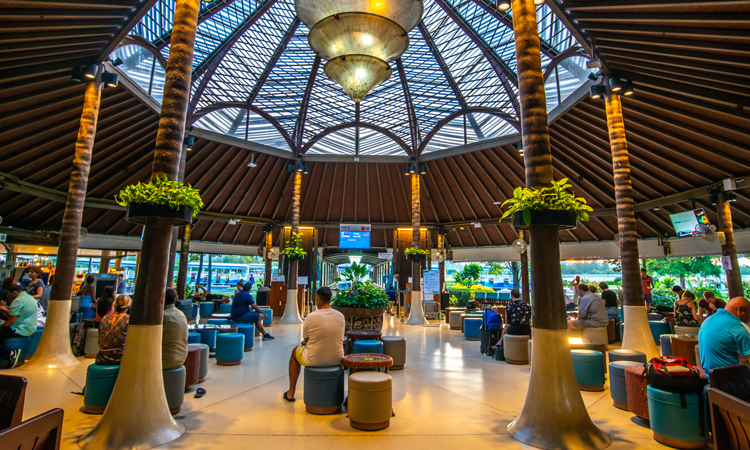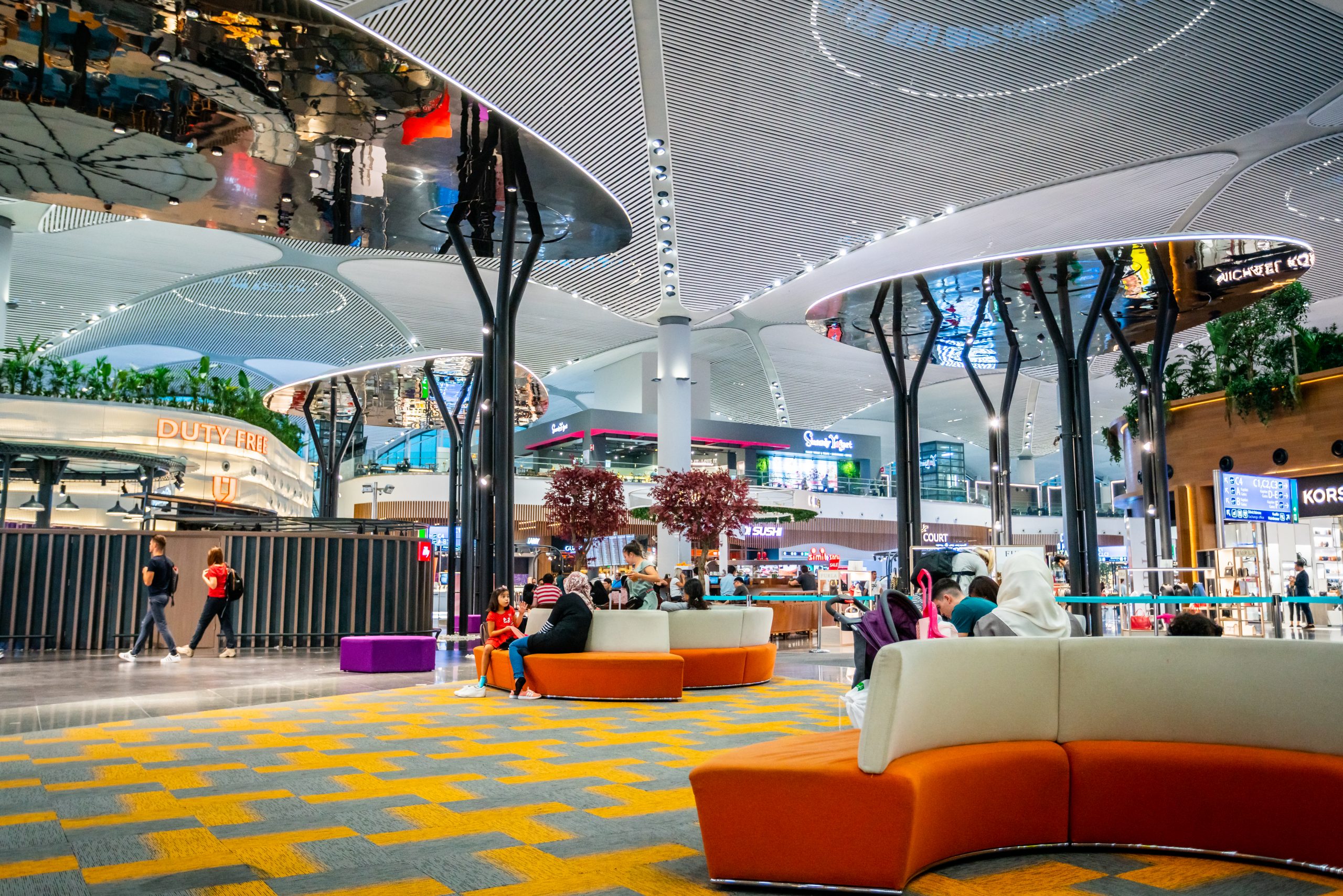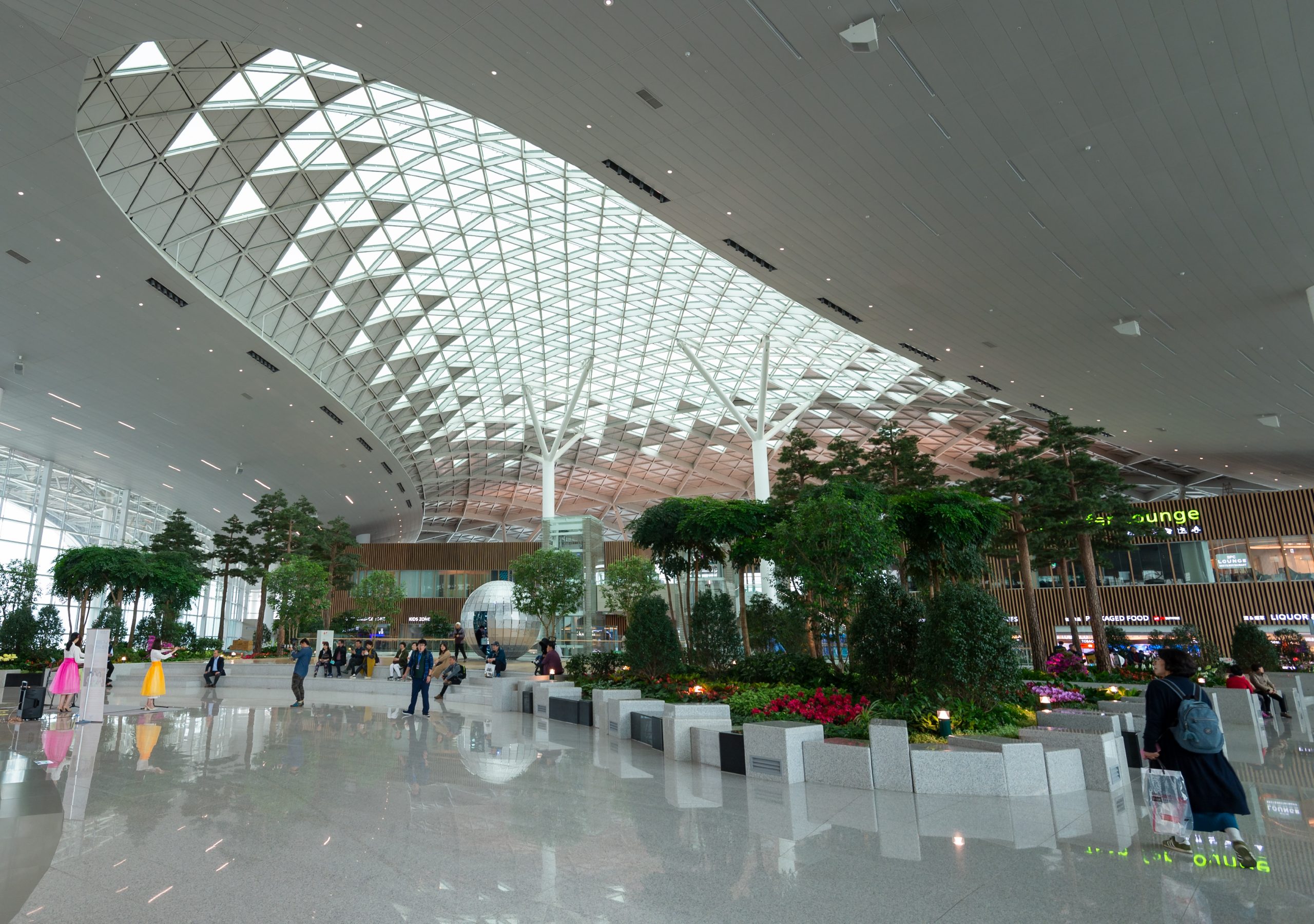Maximising design at small airports
By Janhavi Poul
9 March 2022
Shares
Janhavi Poul, Lead Terminal Designer for Adani Airport Holdings, outlines how smaller airports should be thinking about the design of their terminals to maximise passenger relaxation and confidence.


Privatisation of airports opened an opportunity for the commercial growth of smaller airports along with improved efficiency, performance, quality of management and service. The increasing public partnership in airports has also created competition between airport operators to create a world-class airport.
It is very important to plan airport design efficiently and wisely for sustainable development. Airport interiors play a major role in enhancing the passenger experience and creating opportunities for revenue maximisation.
Innovate
One of the advantages of the smaller airport is that they provide a more pleasant, satisfying, and efficient experience than larger airports if planned effectively. Such airports are usually a single-story, simple, and easy flow through the terminal, quick check-in and baggage reclaim area. The interior increases the aesthetic or ambience of airports and helps to attract more traffic through an innovative approach. The airport is a very complex, heterogeneous building where various people are involved from passengers and visitors, to the airport staff and outside contractors. Airport buildings are filled with cherished travel memories, as well as stress and anxiety for passengers going through the mandatory airport protocols. So, it is also important the design of the airport interior makes passengers feel at ease across each stage inside the airport. For a designer, it is an extremely challenging opportunity to create an experience where the element of timescale and cost come together. The choice of material, lighting and furniture becomes crucial, in order to complement the overall ambience of airports. The below parameters of interior design for the airport will help operators to design smaller airports more effortlessly.


Istanbul Airport: Lighting and vibrant colours influence the aesthetic effect and overall environment.
Establishing identity
Every airport has its own identity in terms of heritage, culture, and local inspiration to communicate. Establishing the identity of that airport at the local and international levels is a predominant part of interior design. This includes local heritage, aspirations and vision that can be defined through corporate branding, advertising, logos, wayfinding, architectural layout, artwork, and commercial spaces. The interior should bespeak the modern airport with a new tradition through various forms.
Wayfinding
People require a pleasant and hassle-free experience while walking from parking to the respective boarding gate and vice-versa. Navigation is a key element to reduce the stress of the passenger throughout the journey. Though wayfinding in smaller airports is not very complex compared to major airports, it is important to identify the strategic locations of the signage including its colour, font size, and visible distances. Warm colours and lights always spellbind people in one direction. The best airport interior has very minimal signage, which creates more transparency for the airport ambience. Directing passengers through the commercial area means they will experience the selection of retail opportunities on offer and helps bring commercial and retail opportunities for the airport.
Passenger screening
At the airport, travellers want a calm and cheerful environment – especially first-time travellers. The most stressful area for travellers is the one which connects the sterile and non-sterile areas – the passenger screening checkpoints. Most airport operators always face challenges in designing these facilities due to periodic technological advances in security equipment and the space constraint at smaller airports. As the ambience of such a stressful area helps to calm the passenger, the focus of design shall be on a wider queuing space without any structural obstructions, so that the maximum number of checkpoints can be accommodated. Most possible innovations in airport interiors can be explored in the departure boarding gates area through spatial arrangements, ceiling design, colours and flooring patterns, aesthetics, and art etc. These design elements create rhythm in the spaces through different kinds of seating, furniture, patterns, and colours. The more vibrant the area, the more it calms the passengers. And as we know, passengers tend to explore the retail and commercial spaces if they are in a pleasant mood. If designed correctly, such spaces in the departure area give autocracy to passengers.
Green airports
The airport is a dynamic industry. It takes two to three years to build an airport. The vision is required to design the terminal for the future to sustain increasing competition and to attract more airlines and passengers. It is also important to investigate the cost and environmental efficiency of the airport. Reuse, recycle, and reduce are the principle of a green environment that helps to select the material efficiently which can be reused. Efficient use of material and energy-efficient lighting design saves the lifetime cost of the terminal and increases the sustainability of the airport. Integration of green walls inside the terminal increases the air quality, lowers the temperature, and improves the performance of the building in various ways. The biophilic interior design approach articulates cultural and spiritual atmospheres within the terminal, which can be achieved by using eco‑friendly and economical material.


Incheon Airport: The integration of green in the interior improved the air quality. Green growth is an active initiative taken by Incheon airport.
Flexible design
A flexible design strategy allows the smaller airport to manage future uncertainties and maximise traffic growth as their growth is stimulated by low-cost airlines and they always compete with larger airports for diverting these airlines. Flexible planning provides the capability of using a single space for multiple uses. Space is a constraint, especially for smaller airports, but planning demand is the same as for the larger airport. This approach helps to determine economic efficiency and performance sustainability. The flexible design achieves through flexible floor options, selection of material that can be modified and reused as per the use of the space. This allows a terminal building to renew itself without any major disruptions and enable it to accommodate future inescapable changes without any major implications on the cost.
Technology
The integration of building information modelling (BIM) technology since the beginning of the project helps to visualise the aesthetics of the airport interior through the digital replica of the building and provide the cloud-based, clash-free model for the construction. It is a unique way to save the cost and time of construction and interior detailing and minimise unexpected changes in the design at a later stage. 3D printing is another technological advance that gives enormous flexibility to designers to explore the most complex pattern or design which is not possible with conventional manufacturing tools. The use of 3D printing reduces wastage of material and time of manufacturing and labour cost. It permits the designer to use more eco-friendly materials with no storage cost as everything is produced on-demand and can produce the same at a later stage as well. Various technological tools are used worldwide by airports, such as the parallel reality experience by Delta airlines at Detroit Airport, which tailors the passenger experience, as well as Google assistance which is used to navigate the passengers in various languages, and smart signage at Istanbul Airport through larger LED screens. These technologically advanced tools mitigate the construction cost, but also save time. The use of these technologies will help smaller airports to stand strong for future challenges.















